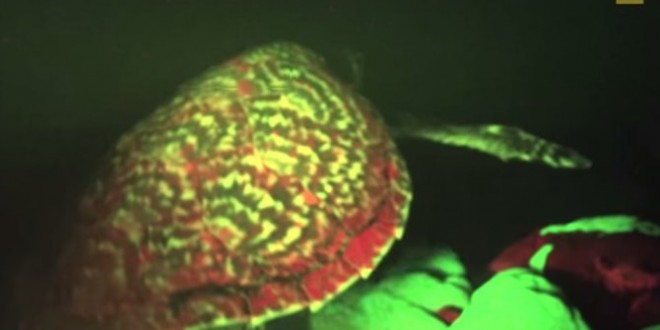Researchers have found the first biofluorescent, or “glowing” reptile: the hawksbill sea turtle.
The team were filming a piece on biofluorescence in coral and small sharks off the coast of the Solomon Islands, when they stumbled upon a neon glowing sea turtle (and no, it wasn’t glowing because it was radioactive).
Talking about the moment the glowing hawksbill turtle swam past, marine biologist David Gruber said: ‘It almost looks like a bright red and green spaceship’.
Due to the fact that it can’t be seen by the naked human eye, scientists only discovered biofluorescence in marine life relatively recently; but David Gruber explained that since making the discovery, they’ve started to find it ‘everywhere’.
But while the phenomenon was already known to exist in various types of marine life, the hawksbill turtle is the very first reptile known to be biofluorescent.
Talking about the discovery, David Gruber explained that they now have a lot of work to do to work out exactly how the turtles use their biofluorescence.
However he went on to add that further research is going to be tricky due to dwindling numbers of sea turtles, saying: ‘These turtles have such a storied history, and now they’re critically endangered. There’s some places where there’s only a few thousand breeding females remaining’.
Agencies/Canadajournal
 Canada Journal – News of the World Articles and videos to bring you the biggest Canadian news stories from across the country every day
Canada Journal – News of the World Articles and videos to bring you the biggest Canadian news stories from across the country every day



